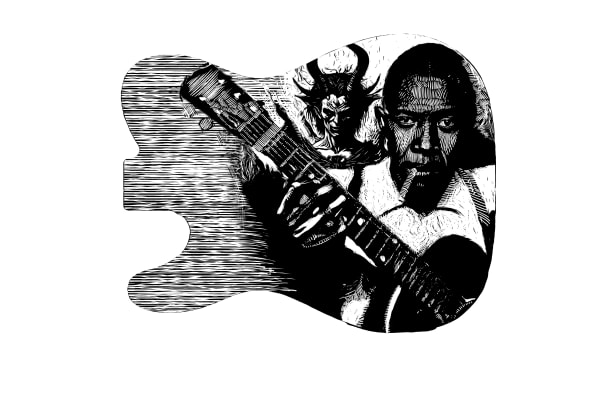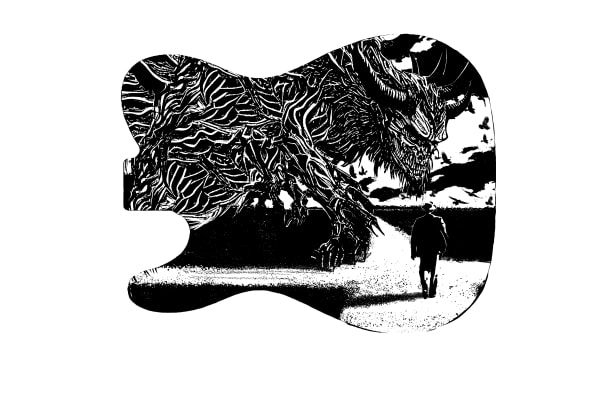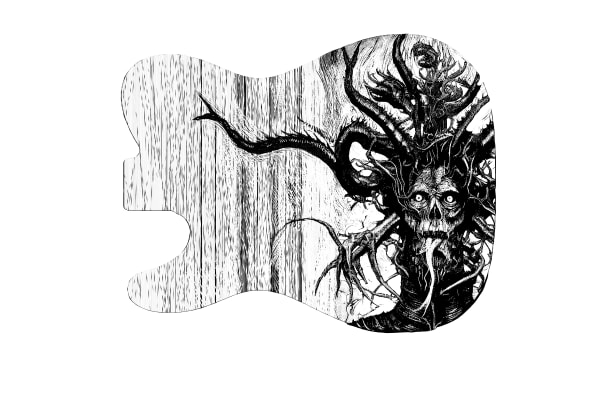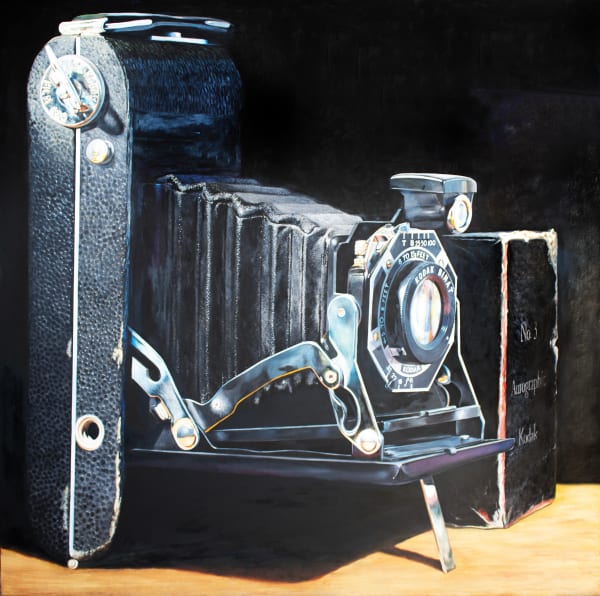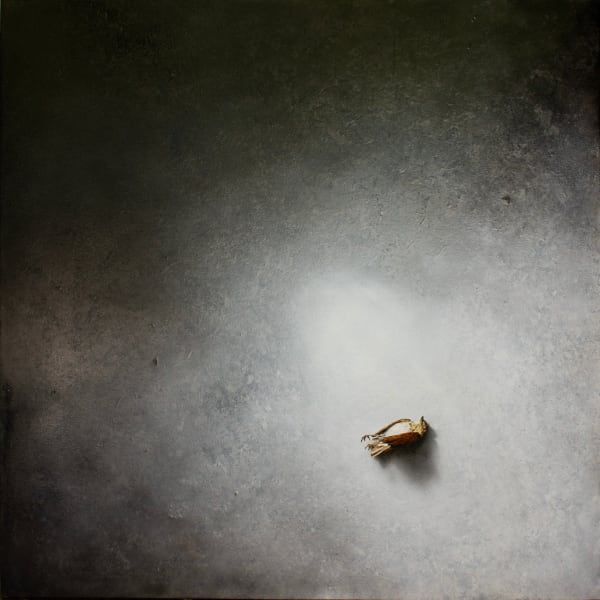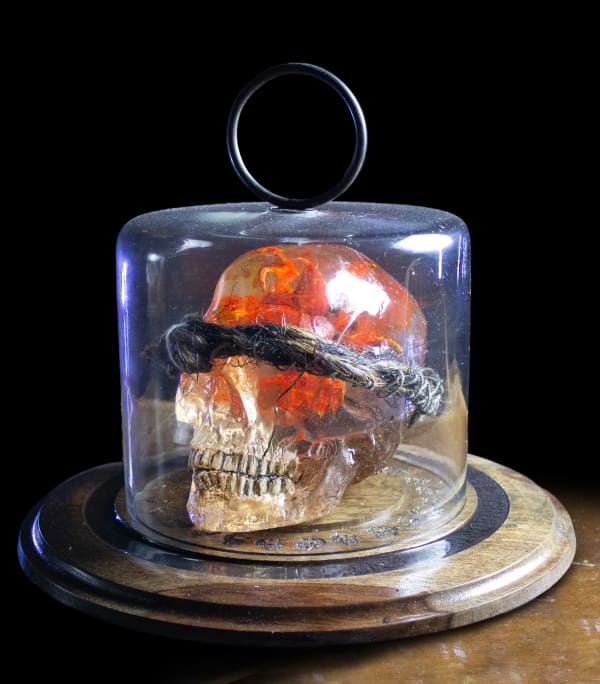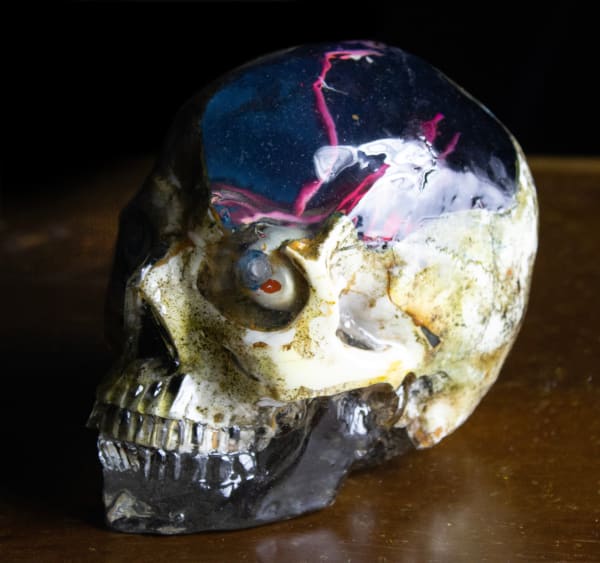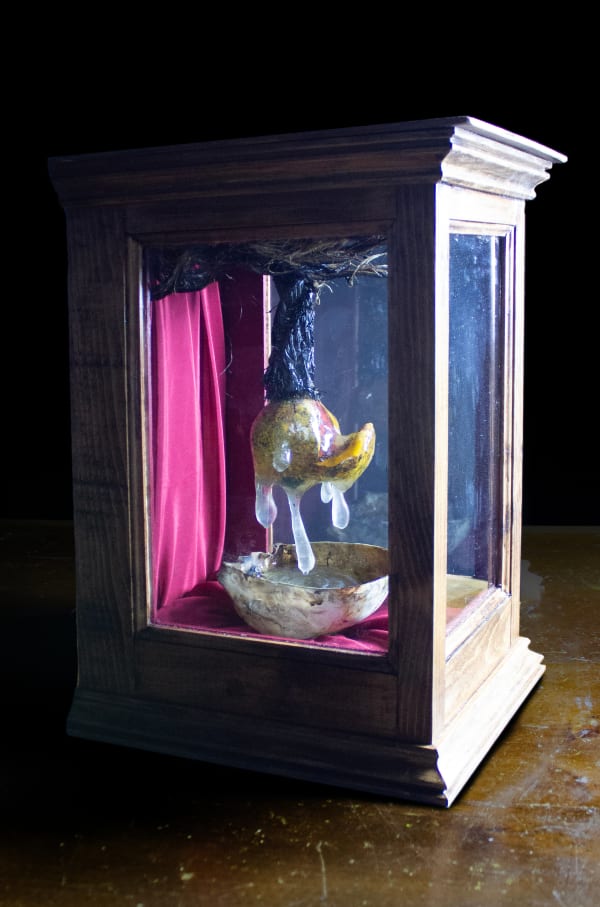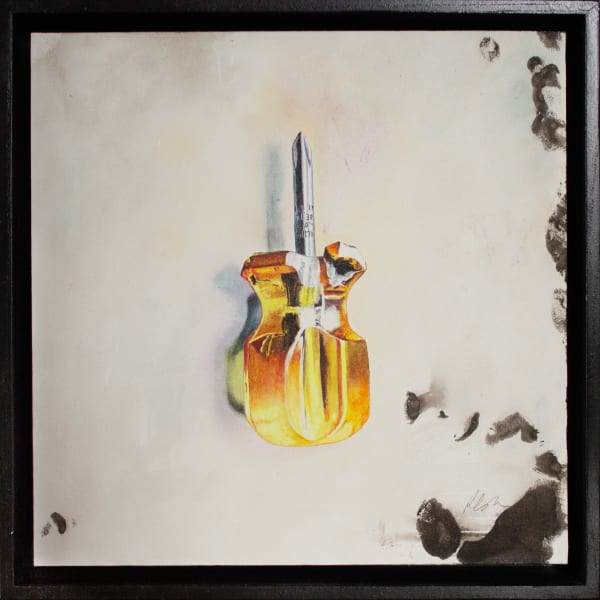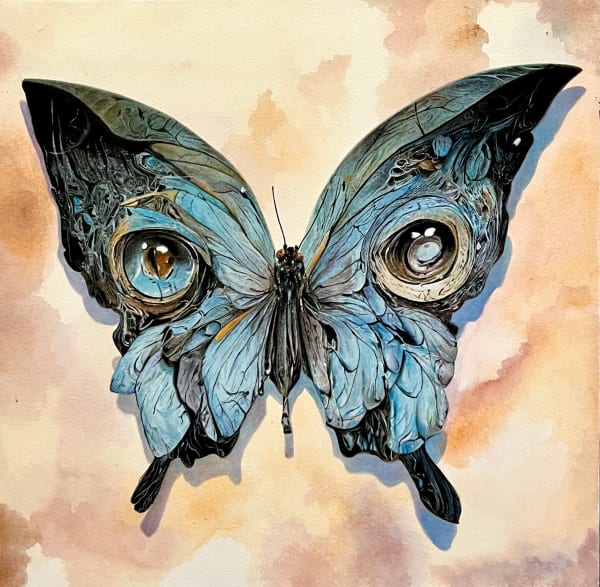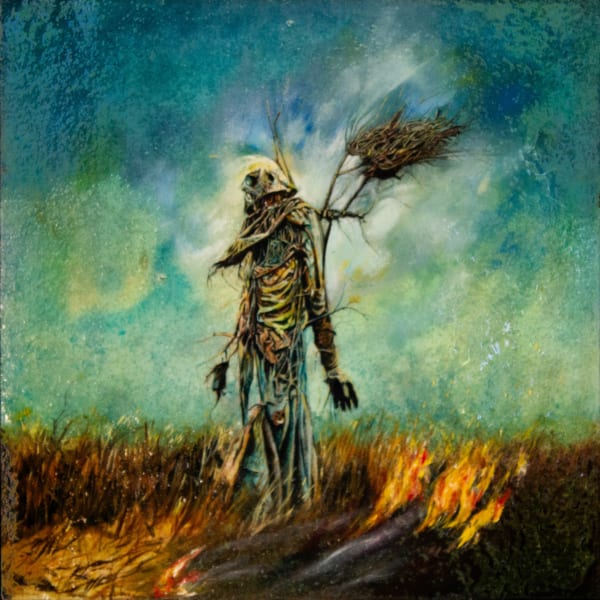-
Overview
Richard A. Jacobson presents a new collection of work inspired by artificial intelligence and the legend of Robert Johnson - the famed guitarist who was rumored to have sold his soul to the devil, after a chance encounter at a crossroads, in exchange for supernatural playing ability. 12:06 AM, One Artist’s Response to the A.I. 'Crisis’ reimagines this legend, positioning the artist as Johnson and A.I. as the trade. Is the use of A.I. stripping artists of their very soul? A.I. is the most recent technological advancement touted to be the “death” of artists, and this collection reflects the anxiety that accompanies such grim predictions. Yet the very existence of an art show suggests hope.
Jacobson explores the efficacy, morality and usefulness of A.I., bearing witness to its potential as an artist’s tool, as a spark for inspiration, while cautioning against the presentation of A.I. generated images as one’s own creation. In this exhibition, Jacobson employs guitars, Johnson’s, and the devil’s visage as recurring motifs, introducing new sculptural mediums such as ornamented playable guitars and resin skulls in addition to woodblock prints and the oil paintings he is so well known for. Bringing together his fears, curiosity, determination, and creativity, Jacobson constructs a show of artistic resilience.
-
Woodblock Prints
-
Playable Guitars
-
Oil Paintings
-
Sculptures
-
Watercolour & Mixed Media Paintings
-
Artist's Statement
When you stand at the crossroads, you are standing at a point of decision.
I have been a working professional artist for over 30 years. Upon hearing the whispers of A.I. generated images and, later, trying it for myself, I felt both mesmerized and terrified. On the one hand, it made it so easy to experiment and to test out ideas. On the other hand, I feared for my livelihood. I was repeatedly being told that everything I had worked for would be taken away from me – not in ten years, but next week.
In the beginning, I actually used it quite a bit. I ran through my allotted free images in a day, entranced. I was seduced by the images produced in seconds and how easy it was to churn out ideas. It felt addictive. Yet, something was… lacking. A.I. could create something beautiful, but it was surface level. They lacked depth; they lacked ‘soul’.
Was the art soulless because it was effortless, morally grey, made by a computer? Was it traded in at a crossroads, maybe around midnight?
I say soul, but I fear that might be too abstract for an explanation. In my experience, it is an emotional connection or response you can have to an art piece. It amazes me how, even without words, something like a guitar solo or a solid colour painting (Malevich’s Black Square) or (Mark Rothko, The Black Form Paintings, 1964- No 4) could convey rich emotion. There is authenticity in the original.
I view art as a form of communication. It begins with the artist – my experiences and influences, my feelings, my ideas, my efforts and craftsmanship. The conversation continues as the art is witnessed. My story is transformed into your story, with its own set of experiences and feelings. In that moment, something deeply meaningful occurs.
If a tree falls in the forest and no one is around to hear it, does it make a sound?
My father used to leave the shop radio on 24/7, still does. As a kid, I could hear it playing through the garage walls late into the night. The thought of it playing alone in the dark through night, haunts me. The radio is just a tool, just an old piece of tech when it is off, but my memories give it more meaning than that. I chose to emphasize tools in this collection because our minds are so quick to think of them in action. A tool neutral and at rest, like my father’s screwdriver, is seen for its history and its potential. Without a witness, however, it is only an object, junk, clutter.
I began looking at A.I. as a neutral tool. It is our use and experience of A.I. that will define its meaning. Certainly, some people will have cruel or selfish intentions. Many tools, like a screwdriver, can become weapons in the hands of someone who intends for harm. But I cannot ignore it, A.I. – as a tool or as a topic – is everywhere. If I am forced to bear witness, then I want the power to have it mean whatever I choose.
For many pieces in this collection, I used the bot as a tool for inspiration: a spark before the fire. Starting with numerous generated images, I would turn to Photoshop and my sketchbook to play with them, piecing them together in much the same way I piece together references for a hyperrealist painting. The images were truly transformed when I began building my ideas and stories into them while I painted, carved, poured, assembled (and so on). Funnily enough, despite using A.I. at the start of the process, this collection has more of me in it, than any before.
Disclaimer: In my opinion, to present A.I. generated work as your own creation is (at best) lazy and (at worst) morally bankrupt. When you had no hand in the creation you cannot call yourself an artist. By typing out prompts, no matter how creatively, you are an art director, not the creator.
-

-
-
Publications
-

A Cold Hand
A Collection of Stories from A Hard Place Volume 3 Richard A. Jacobson, 2022Paper 269 pagesRead more
Publisher: Deadcat Studio
ISBN: 978-1-990182-16-7
Dimensions: 9 x 6 in -
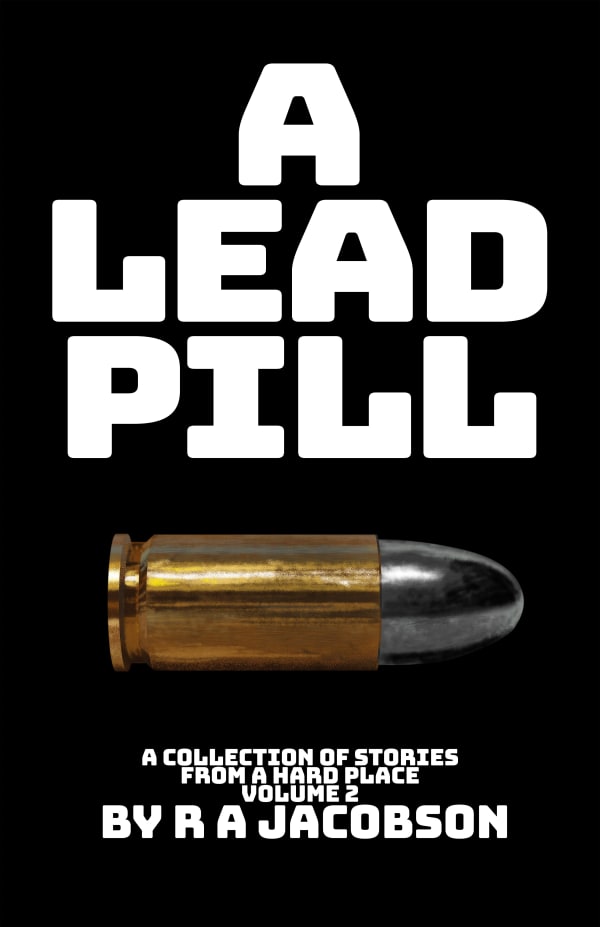
A Lead Pill
A Collection of Stories from A Hard Place Volume 2 Richard A. Jacobson, 2021Paperback 193 pagesRead more
Publisher: Deadcat Studio
ISBN: 978-1-990182-02-0
Dimensions: 9x6 inches
-

A Single Round
A Collection of Stories from A Hard Place Richard A. Jacobson, 2020Paperback 184 pagesRead more
Publisher: Deadcat Sudio
ISBN: 978-1-7773086-5-0
Dimensions: 9x6 inches -

Hard Place
Crossroads Edition Richard A. Jacobson, 2021Paperback 695 pagesRead more
Publisher: Deadcate Studios
ISBN: 978-1-990182-14-3
Dimensions: 9x6 inches
-
Join our mailing list!
Newsletters update subscribers on our latest exhibitions, events and exclusive offers.
* denotes required fields
We will process the personal data you have supplied to communicate with you in accordance with our Privacy Policy. You can unsubscribe or change your preferences at any time by clicking the link in our emails.



